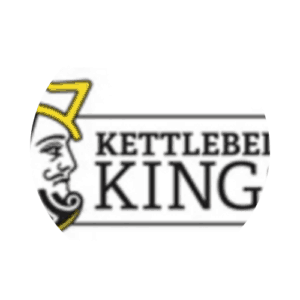Our content is reader supported, which means when you buy from links you click on, we may earn a commission.
26 Online Course Creators Share Their Course Launch Tips, Stories, and Mistakes

Want tips on how to launch your online course?
You may have already created an online course and now you’re wondering how to get it into the hands of your learners. Or maybe you’re thinking about creating a course and wondering how you’d sell it once you create it.
Either way, this article is for you!
The worst mistake you can make is to create a course and silently add a link to your website.
You need a launch strategy to make the most impact.
As with most digital training experts you probably have knowledge that can make a difference in someone else’s life. You want to get your knowledge out there to help transform lives and a launch is the fastest way to do it.
A launch will also help you generate success stories, make more money right away, and it’ll help you figure out where your market is so you can repeat the launch steps over and over again.
Which Comes First, Your Launch or Your Course?
Most people think creating a course first then launching it is the only way to go, but it’s not. You can also launch your course, then create it with your launch group. This strategy is popular because an online course takes a while to create. No one wants to go through all the effort of creating a course only to have no buyers.
With this strategy, you’ll usually create the course with the first group of buyers. So module 1 may be week 1, module 2 may be week 2, and so on. You can make sure to address the questions that pop up as you present your course material. That means you’ll be busy as you go, but the end result will be a course you know people want.
This is an especially valuable strategy for launching your course if you want to validate it first.
Alternately, if you want less stress after your launch, you can create your course first and then launch it. You can always make version 1.0 and then update it from there based on feedback from your learners.
Either is a valid strategy. You just need to figure out which one will work best for you.
Tips from Real Course Creators
From big multi-million dollar launches to those that are drawn out over weeks (if not months) there are a variety of launch methods and tactics.
But what about real course creators who don’t have massive budgets or weeks or months to pull off a big launch strategy? How do they typically launch their online course?
I asked 26 course creators the following question:
What are your best online course launch tips?
These are people just like you and me who don’t have massive budgets. They desperately want to get their course out there in the hands of their target market to change lives.
Here are the stories they shared:
—
 1. Lee Wilson
1. Lee Wilson
~ Lee, A.K.A. Coach Lee, runs MyExBackCoach.com where he offers a course helping with relationship recovery.
“I launched my website and YouTube channel first. I’m a breakup coach so I pushed the mailing list offering a white paper on how to re-attract an ex after they dumped you. On my videos I pushed people booking a coaching call by going to the site knowing that I would offer the course in its place when it was ready.
Then when the course was ready I emailed the list, made a video about it and plugged it in my videos going forward and in all the descriptions of the old videos. Then I went back to all the articles on the site and plugged it. My course did $200K its first year.”
—
 2. Phil Strazzulla
2. Phil Strazzulla
~ Phil is the founder of SelectSoftware, which helps human resources buy the right software through free online guides.
“I’ve launched several courses and each time I start by offering my immediate network a free coupon to take the course and provide feedback. This allows me to refine my offering, as well as start to build social proof with reviews and number of students listed.
Once I’ve gotten the first 5-10 reviews for my new course, I then start promoting it to my social channels, newsletter, relevant forums, and thought leaders. I offer these early adopters a coupon for 50-75% off the sticker price as an incentive, as long as they sign up within one week.
After this initial promotion, I’ve found most courses become steady annuities that consistently offer income with minimal required marketing as long as you have sufficient positive reviews, and have created content that has a large target audience.”
—

3. Scott Asai
~ Scott helps people develop leadership skills to advance their career status through scottasai.com and introvertu.
“With today’s education trends, an in-person classroom isn’t the only way to learn a highly coveted skill. As an entrepreneur online learning is the future of education, so after researching different platforms I went with Teachable. At the time they had a program called “Teachable U” which basically walked you through the course creation outline and nest steps. It was through that program that I was able to launch my online school, Introvert U. The goal was to create one course in 90 days, but as an achiever I completed 4. Creating content comes down to teaching what you know, but the real challenge is after you launch: marketing and sales.
It’s up to you to leverage your network.
I originally launched my course through email. The response was pretty good, but posting on social media has been helpful too for people looking for a career change or leadership help.”
—

4. Nance L. Schick, Esq.
~ The Law Studio of Nance L. Schick and creator of the Third Ear Conflict Resolution process.
“I am an attorney, mediator, and conflict resolution coach who has been teaching continuing education courses for more than 15 years. I’m also creator of the Third Ear Conflict Resolution process and founder of the school with the same name. I hadn’t planned to start an online school (or at least not this year), but the New York State and New York City mandatory sexual harassment training requirements created a lot of hardship for businesses with 10 or fewer employees and those with virtual workforces. So, I created a course their employees could do during down times and on their own, yet with access to me for questions, clarification, and other guidance.
My launch tips:
- Stay focused on what your audience wants and needs, not just what you want them to have or what you need.
- Don’t keep tweaking the materials until you get them perfect; you will always find imperfections, so you will never launch.
- Plan to market the course regularly and still only get modest results. It’s a crowded and competitive space. That doesn’t mean your course isn’t valuable.”
—

5. Jay
~ Jay works with Kettlebell Kings and Living.fit where his company offers kettlebell courses.
“It’s important to test a lot of different platforms to make sure you choose one that suits you best. We launched by organizing our content into different sections including movements and follow along workouts.
We recommend building an email list ahead of time. Our email list was something we had been building for a few years. We had an email list of 100,000 people so we let them know about the new content. We created a series of emails that went out depending on specific actions people took in emails to alert them about the new courses and give them special offers.”
—

6. Jim Costa
~ Jim is a photographer, video producer and YouTuber at Jim Costa Films where he teaches people how to create and edit their own videos.
“I leverage YouTube to grow my business. Basically, I provide informational and training videos on topics related to my business and skills and monetize the viewership. It works like this: The focus of my video blog is helping people, specifically, senior citizens to become more familiar with technology to improve and better their lives. I create enough content that is relevant to any aged audience while still specializing in helping seniors. Within the videos on my channel, I offer free information via an email sign up. People enter their email address and get the freebie. I am then able to grow my email list and market directly to people interested in my videos and my services.
I first launched my online course by creating several months of video content related to it and releasing at least one new video every week on a regular schedule on my YouTube channel. My course teaches Adobe editing software. My videos teach people about video production and photography topics and on technology topics as well, such as how to use a computer. All areas are related to my course and target the correct audience.
After some months of growing my YouTube channel and audience, I expanded my social media presence and created a private Facebook group where I provide other tips and tricks on photography and videography to a highly targeted audience.
I do my best to be highly niche in my targeting so my time and effort is focused on the right audience. Video builds trust and credibility with your audience because it can establish you as an expert in your field and builds long term relationships.
After getting my private Facebook group going, I then expanded and cross promoted my content on other platforms including Instagram and Twitter to further grow my audience.
Once I grew my audience, I launched my course in multiple parts.”
—

7. Gemma Bonham-Carter
~ Gemma is the founder of The Passive Project and Launch Your Shop.
“I launched my first course in 2016 with a tiny audience and no fancy tech. But I did have the drive, motivation, and a willingness to figure it out. I knew I could have a big impact and help others create profitable online businesses. I just wanted to share my knowledge! Since then, my launching and marketing strategies have gotten a lot more refined. However at the core of my business is still a simple willingness to help and encourage people.
My best tips for someone looking to launch their first course?
Don’t create the whole thing before you know if anyone is interested in buying. You need to pre-sell your course. Pre-selling, even if just a few people buy, means that you have validated the concept. You know that it’s a course people are willing to pay for. It gives you the opportunity to create the course content in real time as you help your students go through it. It also means you will work closely with that first group of participants and will help them get incredible results. Results you can share as case studies and testimonials for your course sales page! Remember, progress over perfection.”
—

8. Khabeer Rockley
~ Khabeer is the founder of the 5 Percent Institute where he offers a sales training course for businesses to increase their revenues.
“We launched our course by building the program, and then by building a webinar that educates our audience about their specific pain points when selling.
At the end of the Webinar we offer the link to our landing page, where they can buy the program.
We launched it by building an email list with ads on social media where people subscribed for a cheat sheet. We then warmed the audience up with the upcoming Webinar date, and then send them the link three days later.
Today; we drip feed the audience information, link them to the evergreen Webinar, and then subsequently the sales landing page.”
—

9. Jen DeVore Richter
~ Jen is a former marketing executive for NASA at Kennedy Space Center turned keynote speaker, consultant and CEO. She runs jendevore.com and offers the Boss Women Rock membership.
“The first course I ever launched was called Rising Influencer for speakers, authors, and coaches. Instead of building the course first and then trying to sell it I sold it first and then built it using a Beta Group of participants. I worked with the small Beta Group privately for six weeks walking them through the core elements using their feedback and input to fine tune each module. Since I charged the Beta Group, I was basically getting paid to create the course. They loved getting hands-on help and I have greatly benefited from building it with their input.”
—

10. Gladice Gong
~ Personal finance blogger and creator of Earn More Live Freely where she offers a course on starting a profitable service arbitrage business.
“After I built a small email list using my blog, I decided to launch my first online course to my email list. I created a series of 8 launch emails. The first three emails gave massive value to my subscribers without selling anything. From the 4th email onwards, I introduced my online course and talked about what was included in the course. Then, I used the last few emails to handle any objections they might have and also create urgency for them to purchase it. Although my list size was not big, I still managed to convert at a decent percentage of subscribers into buyers.”
—

11. Joshua Lisec
~ Joshua is founder of The Entrepreneur’s Wordsmith LLC and ghostwriteandprosper.com where he teaches people how to earn money as a ghostwriter.
“Instead of investing time, energy, and money into building a course without any guarantee people will buy it, why not sell the thing first? That’s exactly what I’ve done with my online course for aspiring ghostwriters, Ghostwrite & Prosper.
I created a course outline so students knew what they’d get when they joined. Then I booked several discovery calls with freelancers who wanted to learn about breaking into high-income ghostwriting for authors, entrepreneurs, and other premium clients.
On the call, we walked through the course table of contents. “The course begins on this date, and the tuition down payment is this. You in?” Only when I’d gotten a handful of paying students did I invest time, energy, and their money in building the course.”
—

12. Tehzeeb Lalani
~ Creator of Scale Beyond Scale offering a 49-day transformational health course called SBS Transform.
“I run an outpatient service-based health and nutrition consultancy firm of my own called Scale Beyond Scale for the last 5 years. After my first 100 or so private clients, I realized there were recurring patterns which emerge during most consultations. Everyone struggles with behavior change and most people have similar knowledge gaps when it comes to health.
This year, I was finally able to package my expertise into an online course! I offered my first pilot to just 5 people who have all worked with me in the past. In all transparency, I was building the course while my pilot cohort was experiencing the program. I would try to stay 5 days ahead of them in terms of content creation.
I knew that if I didn’t have a group of real people to offer the program to – I would procrastinate and never get it off the ground. Because of the pilot, I had a real deadline and a reason to deliver.
I ran a second pilot with 7 people and further fine-tuned my program. Last month, I did an official launch. More people are experiencing the program now and I am still refining it as I go along. The goal is to get 100 users before the end of this year.”
—
 13. Kristin Ingram
13. Kristin Ingram
~ Kristin is the founder of Ingram Digital Media, Inc. and creator of Bookkeeper Training School with courses on how to start a business as a book keeper.
“I just launched my course 60 days ago. Here’s what we did:
We built a sales page, a Facebook page, and a coming soon page.
Everyone we knew got invited to like the Facebook page. We also asked them to invite friends they thought might be interested in our course, Bookkeeper Training School. In the first day, we got over 100 likes and soon reached 200. I spent a week going live and talking about the course, encouraging people to opt-in. We got 100 people to opt-in before we opened the cart. We offered a bonus to people on the list who purchased in the first 24 hours. In total, we sold 40 seats to the course.
Best part: we didn’t start building the course until we opened the cart. We had the course outline and anticipated release dates. Within 24 hours we released the first module and bonus. We released new content each week until we finished the course.”
—

14. Sally Hendrick
~ Sally is the Facebook™ Experiential Branding Strategist at go-sally-go.com and socialmediatrafficschool.com.
“I am a prolific course creator of digital marketing courses. When I first started out, I actually sold my course topic before I created it. I’ll never do it another way again.
Selling your idea before you create it allows you to poll those interested in your topic, meet with them to dig into the topic further, then expand into creating written and video course materials to put into your course. That way you are meeting your interested parties where they are in the learning process.
It’s very easy as an expert in your field to jump way ahead of the clients you are serving, thereby losing their interest and ability to make progress with your course. There’s nothing more frustrating than to create this beautiful course with videos, downloads, and exercises and to have no one consume it because it’s not what they need yet in their educational journey.
The formula I follow when creating a course is to:
- First commit to one idea, one topic.
- Do some research on the topic and the target market that needs it.
- Present the topic to colleagues, friends, or others in your network to see what they think of it.
- Adjust your topic to be more clear and concise in the description.
- Outline your vision of the course.
- Sell the idea first to a beta test group for less than full price.
- Poll your new customers to find out what they need most.
- Have a group meeting to discuss and get to know one another.
- Follow up by creating materials and hosting the recording of your meeting in an online course platform, if appropriate. Otherwise create a summary video of the main takeaways from that meeting.
- Repeat for each module that you’re planning as you go.
- Get testimonials from your beta test group.
- Make adjustments based on feedback.
- Then create your second version to market to a new group of people at a higher price.
Once you’ve done this, it’s much easier to do again and again with new topics. Also, don’t try to promise the world at once. Keep your courses short and simple to create immediate outcomes. Later on, if your courses make sense together under a larger umbrella of curriculum, pull those pieces together into an academy of offerings or into a membership site.”
—
 15. Rob Powell
15. Rob Powell
~ Rob is the CEO and founder of Rob Powell Biz Blog providing traffic tips for bloggers.
“My first online course was an SEO course called ‘Page #1 Traffic Surge’. I launched it on Teachable.
Before launching it, I did a lot of research into the various launch models. Everyone seemed to agree that the Open/Close launch model works best. People need a reason to join your course now, otherwise they put it off for another day. The Open/Close model creates urgency and prompts people to take action. The alternative is an Evergreen launch model. The consensus is that when your course is permanently available, it just tends to sit there gathering dust.
So I opted for an Open/Close model. I created a 7-day email sequence, and I announced my launch date to my list. At this time I had about 1,200 subscribers. I sent the email sequence out, with intervals between each email. The window for joining the course was 14 days.
The response was quite good, and I made several thousand dollars with that first launch. I then heard about ‘evergreen deadlines’ and started using Deadline Funnel in conjunction with Teachable. I found Deadline Funnel quite fiddly to set up. It didn’t generate many sales, but I know others who have had success with it.
My tips for launching your first course are:
- Use a reliable third-party platform like Teachable or Thinkific – the last thing you want is customers who can’t access what they just purchased
- You need to create urgency because human beings are natural procrastinators – so use an Open/Close launch model. You can do an Open/Close launch four times a year or even more frequently. I know someone who does an Open/Close launch every month (and she’s been very successful!)
- Create buzz around your course in the days leading up to the launch. You do this by sending out a series of emails that contain real value. Your emails need to make your audience think: “If this is what he’s giving away free, what does the course contain!”
- If you tell people you’re closing the course on a certain date, you must do that. Otherwise you lose credibility and that’s something that’s hard to get back.”
—
 16. Emily Walker
16. Emily Walker
~ Emily is a learning designer and the founder of Modern Leaders Collective where she helps online entrepreneurs scale their businesses.
“Over the years, I’ve worked with many clients launching their first course. This includes newer business owners up to 6 and 7 figure entrepreneurs.
Here are three tips I suggest:
1) Connect with your audience first – everyone is afraid of launching to crickets. By connecting with your potential students (whether it’s through a virtual coffee chat, a questionnaire, or social media), you’ll get to hear first hand what their problems are. You’ll also hear the words they are using to talk about it, which makes writing your launch copy a breeze!
2) Create a super solid course design – often people skip right to launch planning before they’ve even taken the time to map out exactly what they’ll be creating for their students. This makes everything a lot harder because there are so many unknowns. For instance, you don’t know the end result of the program, the action steps your students will be taking, or the other moving pieces of the online experience. By creating a rock solid course design first, you’ll feel clear and confident launching and selling your online course. That way you can design the entire experience with intention.
3) Do it your way – there is a lot of noise out there in the online course creator space, and most of it is saying there is only one right way to do things. Instead of getting sucked into comparisonitis and trying to fit yourself into someone else’s launch plan, take the time to do a gut check. Ask yourself, does this feel fun? Does this feel stressful or exciting? Does this feel aligned with how you want to show up for your business and your students?”
—
 17. Hannah Dixon
17. Hannah Dixon
~ Hannah is the founder of Digital Nomad Kit where she helps virtual assistants start and grow their businesses.
“The very first course I launched 3 years ago went terribly. I feel the need to share with those who may consider using the same methods as myself.
I run an online course(s) for aspiring virtual assistants, which today is very successful. But this was not the case in my first ever launch. I had been fed a lot of different advice from multiple online ‘gurus’. At the time, the general consensus was to pre-launch a course before having actually made any of the content. This was the ‘all the rage’ thing to do. So I, of course, obliged.
I made $10K in sales and I was crazy excited but what came after was much less exciting. It turned out I didn’t have the knowledge nor capacity to deliver on my promises in any reasonable amount of time. I learned a very big lesson here on the importance of transparency. I had to confess the error of my ways and offer refunds and/or consulting to remedy the situation. Thankfully, my open, honest approach actually built me a loyal, loving community. They are still my biggest supporters today. Not one person wanted a refund, and I eventually figured it all out over the next year.
I now launch my courses successfully every 3-4 months via a 5 Day Challenge (the 5 Day VA Challenge). These challenges take participants through 5 days of action-oriented tasks. The tasks get them feeling ready to keep the momentum up and buy into the extended course to keep making meaningful moves in the right direction. I’ve really mastered the art of tweaking the multiple moving parts of these launches in order to maximize their success. This includes changing the copy on chat bots, to giving less or more personal feedback based on the group dynamics. Challenge launches not only bring in course sales, but with each round I grow my email list from 500-1000. I am very thankful to have had my original ‘pre-launch’ strategy backfire to enable me to rapidly learn how I work best and how to pull off profitable launches my own way.”
—
 18. Jonathan Polley
18. Jonathan Polley
~ Jonathan runs Make Science Easy which provides online science courses for high school students and home-schooled kids.
“Before I moved exclusively to working on Make Science Easy, I taught science to students aged 11-18 in a range of schools in the United Kingdom and Spain. I decided to provide online science courses because it very quickly became clear to me that there is a complete gap in the market for a qualification known as the International GCSE (iGCSE). A million learners every year take this exam. However, there are no resources tailored specifically for this qualification.
When I started creating my courses I very quickly realized I had a large skills gap that I needed to address. These were mainly technological skills, developing websites, and digital marketing. The course creation itself was far less of an issue. It required a lot of work and effort, but used skills I already had. I quickly went to work creating my courses, producing what I think is a good product that meets a need with high demand.
Actually launching the course was much more challenging. I naively thought that the “If you build it, they will come” approach would work. It did not. The lesson was a hard one, but a vital one.
Creating an excellent course is incredibly important, but without the right approach to marketing no one will actually know about it. You won’t sell anything to anyone. My initial launch was a bit haphazard to say the least. I wasn’t really marketing to anyone specifically and although I knew who my target audience was, I wasn’t really sure how I could get through to them. In hindsight I would have been better served by developing my marketing strategy in tandem with the actual process of course creation. This would have led to a far smoother launch.
Post launch I’ve put a lot of effort into developing a better picture of who my key audience is (teens and their parents) and how to market to these two specific groups. I’ve also learned that by marketing to one or two key demographics and not trying to be all things to all people, I have a much clearer message. Ironically this means I attract far more customers who are not in my key demographic than I was previously.”
—
 19. Angel Pretot
19. Angel Pretot
~ Angel is a French learning coach at frenchfluency.net where he offers the French Fluency Accelerator online course.
“Prior to launching my course, the French Fluency Accelerator, I had been doing 1-1 French learning coaching, following a systematic process. I had also marketed that 1-1 signature service using online launch techniques such as webinars, the product launch formula framework, a social media strategy and email marketing. So creating my course and launching it felt like a natural continuation.
For me, it has always been easier to deliver my content live than to make pre-recorded videos, and this also has a higher perceived value. So I decided to make my entire first launch live, and to deliver the course live *after* it was already launched. I drafted the framework of the course: three live workshops based on the three parts of my pre-existing service.
I really wanted a subscription based offer, so I add a live workshop every month to this course. All the workshops are recorded and remain available to the members as long as they’re in the course. This way, I keep adding value and serving my students as the course grows, and it makes sense to have recurring billing.
This allowed me to save a lot of time and headaches.
I knew that by delivering the workshops live and interacting with the students daily in the Facebook group, I would be able to meet their needs much more easily than if I had recorded everything in advance. All the experience I had in 1-1 coaching also allowed me to feel secure as I was executing this plan. I knew my clients and their issues really well.
The first launch and the initial delivery went very well. I now have a global community of French learners taking the course, with all major English speaking countries represented. I am looking forward to launching again a few times per year and growing the community.
Prior to this success (like every course creator I know), I had a number of failed attempts. I made all the mistakes you can think of. I created an entire video course that hardly anyone wanted and I couldn’t sell at all. It took me about two and a half years of learning, interacting with my audience, and growing my business before I could launch a course successfully.
I strongly recommend offering 1-1 coaching before launching a course. This allows you to work with your ideal clients, get to know them, grow your audience, all the while being paid for your expertise. Once you’ve gathered a lot of experience working with actual people, and attract an audience, it’s a good time to launch a course.”
—
 20. Faithaline Hippolyte
20. Faithaline Hippolyte
~ Faithaline runs atouchofhappy.net where she’s created transformational online courses to help you re-discover who you are.
“I create courses based on lessons drawn from fairy tale stories that help women improve their minds and lives.
My products are unique and inspiring, in that each lesson is based on themes drawn from beloved fairy tale stories. Also, in addition to being transformational and helping women improve their minds and lives, the fairy tale connection also makes them fun!
For the launch of my Cinderella Fix course, my strategy was to use a giveaway of a related item in order to filter prospects who would have some level of interest in my course. In this case I gave away a crystal Cinderella slipper through Rafflecopter. Anyone who entered my giveaway was sent to my Pinterest page, and added to my mailing list. They were then informed about my fairy tale course through my Pinterest page, as well as via email when I sent out the announcement of the giveaway winner.”
—
 21. Kevin Davey
21. Kevin Davey
~ Kevin is a full time trader and the founder of KJTradingSystems.com where he teaches an algo trading course.
“I created an online course back in 2014.
Back then I had just released my first book. After the book, I created a course (which includes live sessions and a substantial video library) that expanded upon the book content, and offered it as a high priced item to people who visited my website.
I called it the Strategy Factory Workshop, even though I had not mentioned that phrase in the book.
In fact, in the book I do not mention the follow-on course at all. I think that is important. You don’t want readers of the book to think they are reading a book long sales pitch.
This creation and launch approach has served me well. Five years later, I am still regularly holding these online workshops.”
—
 22. Carla Williams
22. Carla Williams
~ Founder and content creator for her course Marketing Made Simple where she helps business owners market their products and services more effectively.
“For a beta launch, here are my tips:
- Definitely host a FREE Masterclass prior to the beta launch.
- Use social media and email marketing to promote the Masterclass (social media ads can be used as well).
- Use Zoom or similar software to record the call and capture attendees that did and did not attend live. Then, email attendees post call with follow up to drive enrollment into the launch.
- Use the FREE Masterclass feedback and Q&A to help influence the content of the course launch.
- For the actual beta launch, you don’t have to have all the course modules complete! But, batch-working will help you be efficient in recording your course content.”
—
 23. Lauren Goldblatt and Rob Roseman
23. Lauren Goldblatt and Rob Roseman
~ Lauren and Rob founded Kickstart Reading where they help kickstart children’s reading skills with online courses geared to appeal to kids.
“Here are a few tips for launching your course:
1) Set up a simple website/landing page before you launch to build anticipation and capture emails so you can share the launch with.
2) Share with everyone you know on social media, and encourage them to share with friends who could benefit. Expect that most of your friends and family might not care or be in your target audience, but if you make 1 or 2 good connections, it’s worthwhile (aka, tell everyone you know).
3) Run a flash sale (24-48 hours only) to promote the launch of the course. This helps create urgency.
4) Try and connect with smaller “influencers” in your niche — going after the Kim Kardashians and big influencers is a waste of time.
5) Remember, even though your launch feels like a big deal, it’s just a starting point. Press on and take small actions every day!”
—
 24. Michelle Raymond
24. Michelle Raymond
~ Founder of michelleraymond.co.uk where she offers coaching and speaking on HR and business growth. She also offers a course called the Business of Speaking.
“When I created The Business of Speaking: How to Speak Like a Pro and Get Paid, I did a survey to find out what people wanted in terms of speaking. Some wanted speaking opportunities and others wanted paid speaking engagements. Armed with this information, I created a pilot course that helped experts attract more speaking engagements and get paid for it. I sold it for 1/4 of the full price. I sold 15 before the course was even created and this way I could identify if there was really a need for it.
Once I started creating it, I sold it at 1/3 of the full price, once again tweaking the content to meet the needs of my target market.
It’s always best to have a soft launch and get people interested in purchasing the course before you’ve even finished creating it. With the money you’ve received, plug it back into the business to pay for your landing page, the online platform, and CRM. Any money you make after that point is pure profit!”
—
 25. Bryan Collins
25. Bryan Collins
~ Bryan offers several online courses for writers at Become a Writer Today.
“I created my online course by interviewing readers of my blog. This allowed me to figure out their pain-points and what they wanted from a course about writing a book. I used this information to create a course outline. I also based the course on my experiences writing and publishing books (something the course teaches). Later on, I used student feedback to improve the course. It’s hosted on a platform called Teachable which is relatively pain-free to use. I also like using solutions like this as they take care of the technical issues so I can concentrate on course creation.
I sell my courses primarily using email marketing. Basically, students find relevant posts about writing (e.g this one about writer’s block) and join my email list. After a few welcome emails, I’ll send them an offer to a course. If they’re interested, I follow up.
My biggest launch tip is to solve, not sell. Even today, I try to set aside an hour or two each week to get on the phone or Zoom or Skype with early students and gauge how I can serve them. These insights inform the emails I send to blog subscribers before I ever try and pitch the course to them.”
—
 26. Brandon C. White
26. Brandon C. White
~ Brandon runs BrandonCWhite.com where he offers business building courses to help entrepreneurs start and grow their next venture.
“I launched my course by marketing to my email list and then sending people to a webinar that lasts approximately 90 minutes. In the webinar I walk through a portion of the course and then explain everything they get with the course. The key for me was/is having an email list who I am talking to on a regular basis. Regular being at least once a week and not always selling to them.
People like what I offer because I’m teaching all the time. They’re willing to pay for a course with me because they know they’re going to get their money’s worth. Every piece of free content I publish always has the goal to collect someone’s email address. I would encourage anyone looking to build and launch a course to start with an email list first.”
Conclusion
You’ve come this far and hopefully you got some great tips for launching your next online course.
As you can see, having a successful course launch often paves the way for long-term revenue from your online course.
It’s worth it to develop a strategy for your launch well before your course is ready to sell. I hope this article gave you a lot of great tips along with inspiration you can apply to your next course launch.
Feel free to leave comments and further tips below!